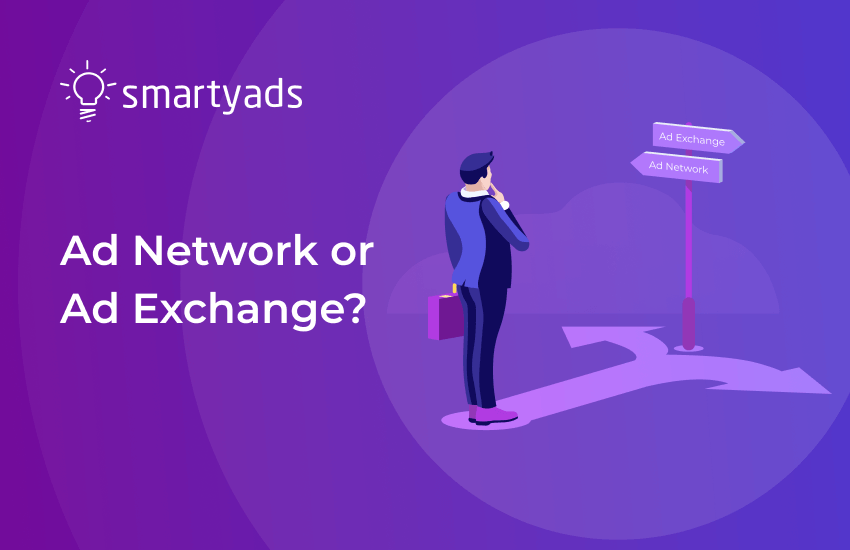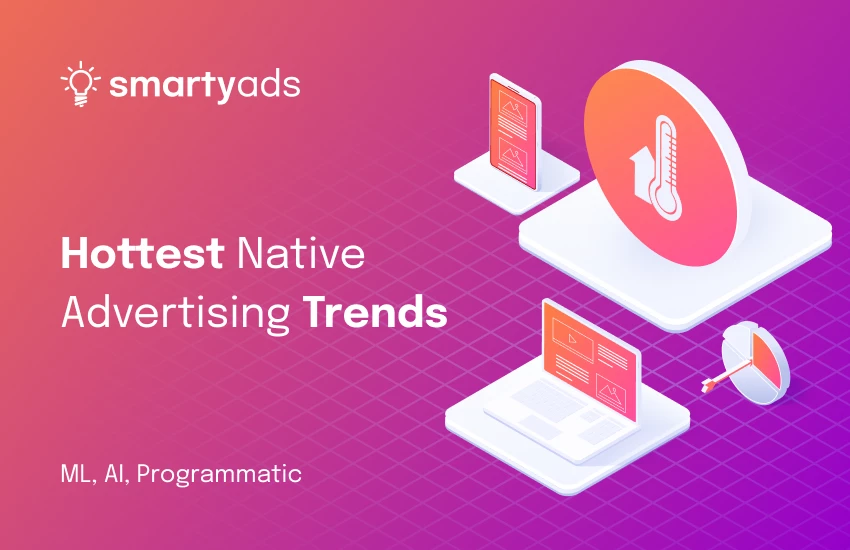Native advertising and sponsored content may at first glance seem almost the same form of paid advertising. In both cases, the advertiser pays for the ad placement of their content on a particular site, and the resulting content mimics what a particular content produces as much as possible.
However, there are a few significant differences between them, so it's important to know how to incorporate them into your marketing mix.
If you cannot understand the difference between native advertising and sponsored content, and why it is still important to distinguish them, read this article to the end, we will try to explain key differences as simply and clearly as possible.

Native advertising
Native advertising is advertising that matches the website content and the context around it. Native advertising is designed to take on the appearance of the site on which it is displayed.
Because of that, such ads are less likely to irritate the user and effectively fight the "banner blindness" syndrome. Native element units don't irritate the gaze like other forms of flashy advertising.
In order to understand what native advertising is, you should remember what traditional display ads or banner ads look like and try to mentally embed them into the interface of the website. Is it difficult? It really isn't. You encounter native ads more often than you think. By the way, you should know the difference between native vs display ads.
How do you know if you're looking at native ads?
Native ads are usually added to a headline, image, description, or caption. Native ads are always clickable and lead to a landing page or article. Native ads can come in a variety of formats:
- Social media ads;
- Paid media ads;
- Paid search ads;
- Promoted listings;
- Recommended content at the end of articles;
- Promoted products on e-commerce marketplaces.
Native advertising content can be difficult to recognize because native ads blend in with the surrounding content, but they always have a label by which they can be easily identified; they are always marked with the word "ad" or "sponsored".
Is it worth using native ads?
Of course, it is! Native advertising is good because it doesn't look like advertising, and instead of shouting banners, it gently leads the user to believe that they need a particular product from a particular brand.
Native advertisements are suitable for raising brand awareness, attracting potential customers, and retargeting existing clients. Programmatic native advertising can be easily tailored to a specific audience segment and be confident that it will reach the recipient.
According to eMarketer, spending on native advertising will reach $30.8 million in 2023. As a percentage, the growth of native ad spending has slowed in recent years, but it's not going anywhere and continues to increase steadily. This means that native advertising remains relevant and useful for marketers.
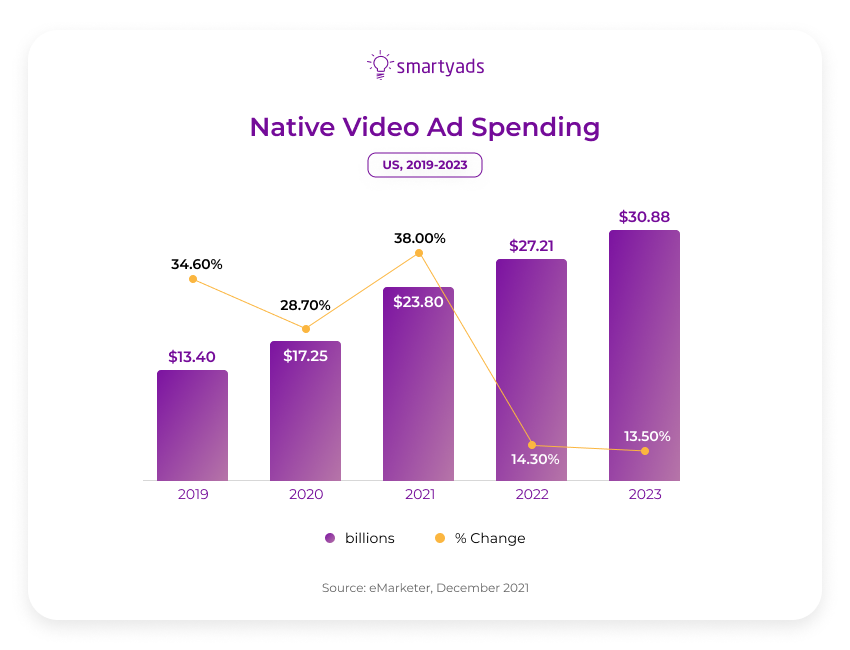
At the same time, IAB Europe claims that 80% of users are more likely to view ads in news content. So native ads integrated into news content will generate more views and conversions and increase your brand's credibility.
Another interesting observation from Taboola shows that the effectiveness of native advertising can be highly dependent on the creative that is used. The right format can greatly increase or decrease your CTR.
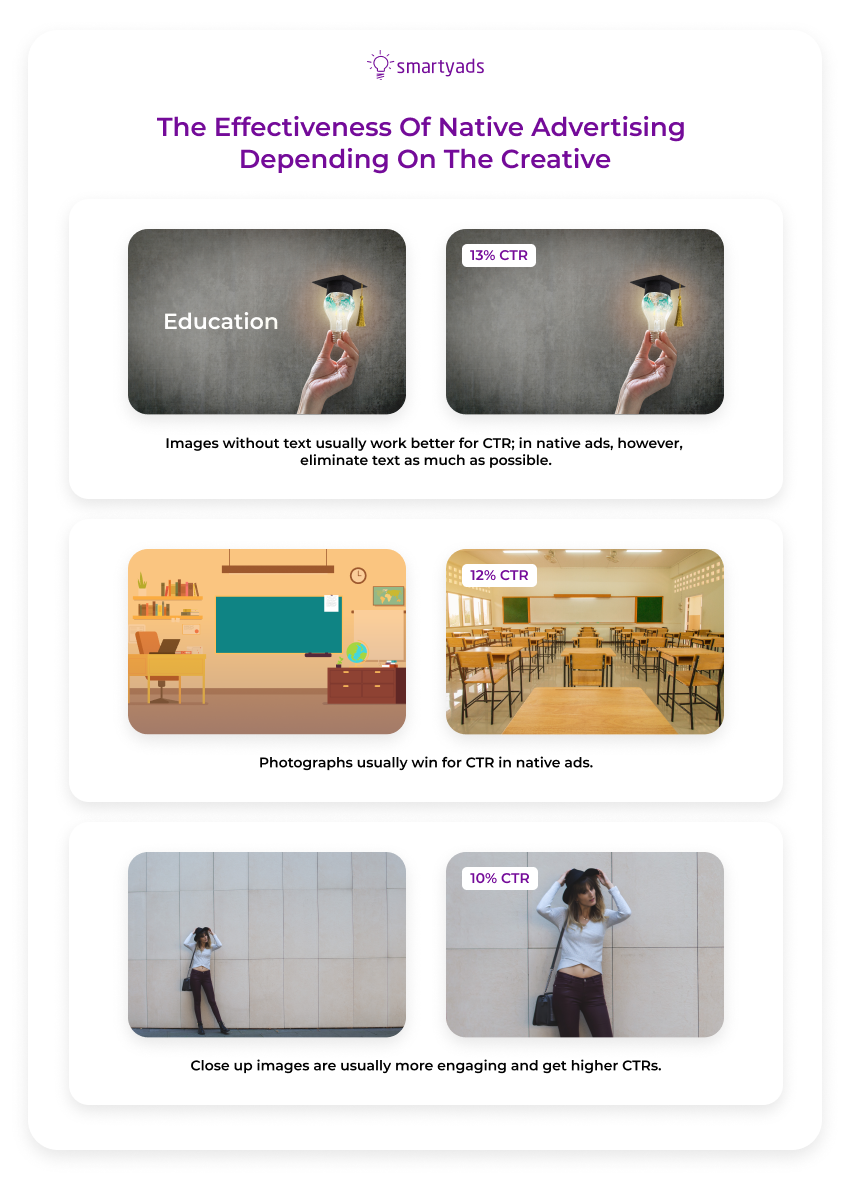
Native advertising can be excellent support for other advertising formats or it can work effectively on its own. The main thing is to understand its usefulness in time and add it to your arsenal of marketing tools.

Examples of native advertising
We talk a lot about native advertising everywhere, but where are the real examples? Let's look at them.
Search ads
The most common type of native advertising encountered by anyone who uses the Internet is search engine advertising.
It works like this: you type in a search query and the search engine displays in the first positions the sites you are interested in, but the owners of those sites have paid to be in the first lines of output.
For example, if you type "native advertising" into the search box, you will get something like this:
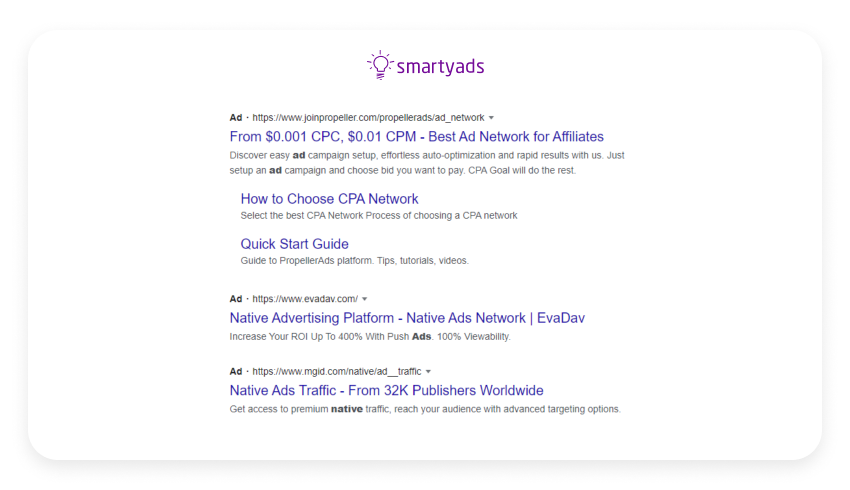
Everything that is marked with the word "Ad" is a native advertisement or paid search unit. Many people click on it without even realizing that they are clicking on a native ad link. Moreover, many marketers sometimes forget that this is advertising.
In-feed ads
And this is what an in-feed native ad looks like. It appears among the rest of the relevant content and integrates naturally into it:
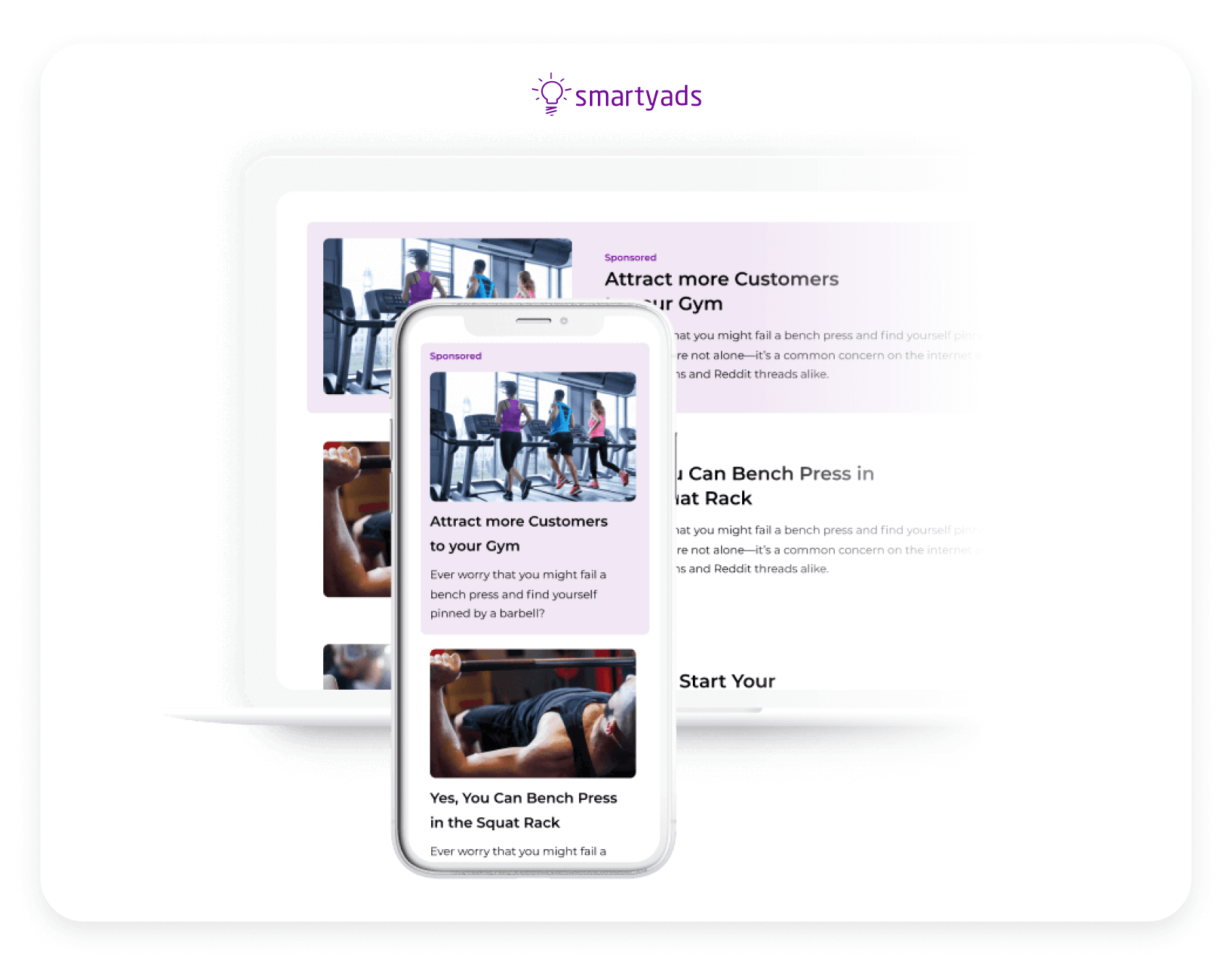
In-app ads
Native advertising can also be integrated into the application interface and be shown to the user as part of the content from that application. For example, an ad can be embedded in video content:
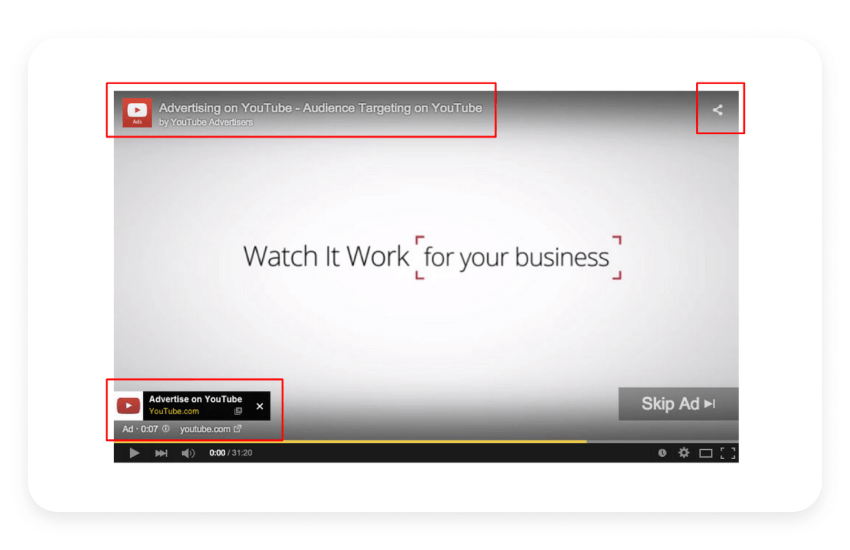
In fact, native ads are very diverse and can be found literally everywhere: on a search page, on your social media, or on promoted listings, which appear on shopping websites. By the way, the blocks you see under this article in the "recommended content" section could also be native ads.
Native ads are good because they trickle very gently into the content and don't impose themselves on the user, unlike traditional ads.
Your potential customer is sure to click on it and read some useful information in the native advertising content. If they don't convert to purchase the same day, they will still have a positive impression of the brand, so they can easily become a goal for your retargeting.
Sponsored content (branded content)
Sponsored content (branded content) is content placed on a publisher's site through a sponsored investment. In other words, it's content that the brand has paid for to post. In this case, the brand is often involved in content creation on social platforms and blogs.
Branded content is very similar to native ads, but unlike native, branded content doesn't just take on an appearance that matches the context and interface of the site or app, it is that context itself.
Generally speaking, because these types of advertising are very similar, branded content can be called a form of native ads. It can perfectly generate leads, capture the reader's attention, and attract new customers without messing with the user's experience.
How do you know if you're looking at sponsored content?
Sponsored content can be anything: a video, a picture, an article, or a publication. A sure sign that you're looking at content from a brand and not organic content would be a "sponsored" mark somewhere on the publication.
Large media sites like BuzzFeed, Forbes, The New York Times, and Huffington Post have special content studios that are responsible for sponsored content creation and publication.
Placing editorial content on a major online advertising portal will cost a lot of money. BuzzFeed, for example, charges about $100,000 for one such publication.
Is it worth using sponsored content?
Sure, it is. Sponsored content is a marketing strategy, just like another marketing method. It will cost you more, but the editorial content is very good if you need a short-term, strong sales boost. For example, such content would be good for brands whose sales are highly dependent on seasonality.
Another important advantage of sponsored content is that it bypasses the restrictions of ad blockers.
Sponsored content is good because it delivers valuable information to the user and becomes useful content. Sometimes sponsored posts are used instead of Wikipedia.
However, you should be careful with such informative articles and preferably narrate something that is confirmed by facts. Otherwise, there is a risk of a multi-million dollar scandal, as happened with the Reebok campaign in 2011, when the company advertised new sneakers claiming that they strengthen leg and gluteal muscles when walking.
It's important to remember that if inaccurate or contradictory information appears in a sponsored article, the brand is solely responsible, as publishing websites protect themselves with a "sponsored" tag. So it's very important to provide high-quality content.
Examples of Sponsored Content
As we said before, a sponsored post can take many different forms, from an article or a landing page to a Snapchat filter. Let's take a look at a few examples of such content.
The Cocainenomics
This is a project created by Netflix in partnership with The Wall Street Journal's advertising department to promote Netflix's show "Narcos". It's an entire project that focuses on an issue highlighted in the show itself — drug dealer violence.
The site has interesting navigation and interactive animations, as well as quotes and videos from the show. It's also a lot of fun to "blow up" cocaine on the first screen of the landing page. Try it yourself here!
Vanguard & Shopify
Shopify sponsored a weekly podcast that you can listen to on 3 different platforms. It focuses on how subcultures and communities make money. It's especially relevant to Shopify since its platform is specifically designed to help small businesses make money. You can listen to it here.
Taco Bell (Snapchat filter)
Snapchat (a photo and video sharing service) allows you to create and use filters on photos and videos that change a person's face or their surroundings. Taco Bell created a signature "taco-face" filter, which has been viewed more than 224 million times.
Native advertising vs sponsored content: what to choose?
As usual, there is no simple answer to this question. It all depends on your marketing strategy, advertising goals, and budget. If you need to increase brand loyalty, brand awareness, or just steady website traffic, then native advertising is the right choice for you.
If you need rapid revenue growth or a booster for a particular seasonal event, sponsored content will work for you.
In any case, both of these areas are extremely promising and continue to grow along with social media platforms advertising. Obviously, sponsored content remains popular and in high demand among users.
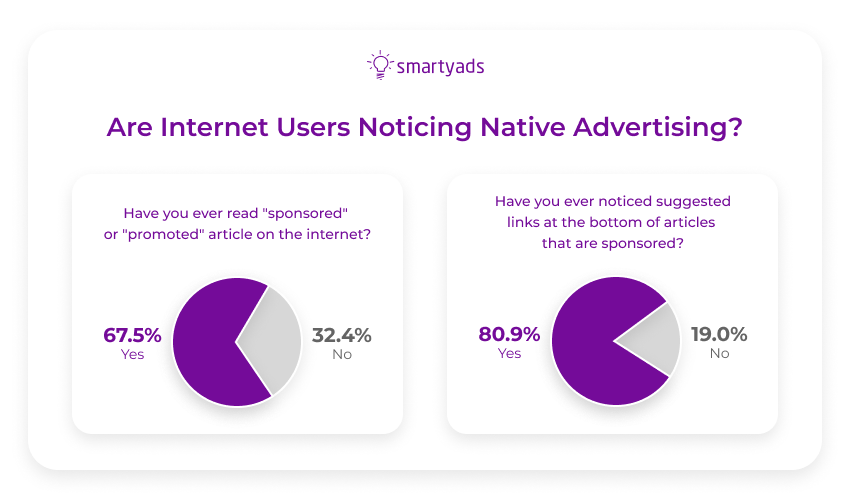
In any case, to publish sponsored content, you have to contact the publisher directly and negotiate the terms on which they are willing to publish that content.
With native advertising, there is no such problem, you just have to use the Demand-Side Platform to place your ads and target them to the target audience. In this regard, native ads win, because sponsored content does not have such an accurate targeting tool, which the use of DSP provides.
In addition, when working with DSP, it is easier to control the advertising budget. And for your marketing campaigns, native advertising will definitely cost less than a sponsored publication from a major publisher.
Conclusions
Both sponsored (branded content) and native advertising are good and attractive marketing strategies in their own way. However, each requires a different approach to use, and when used, they help marketers achieve different goals despite appearing to be very similar tools at first glance.
Launch a native ads campaign with SmartyAds!

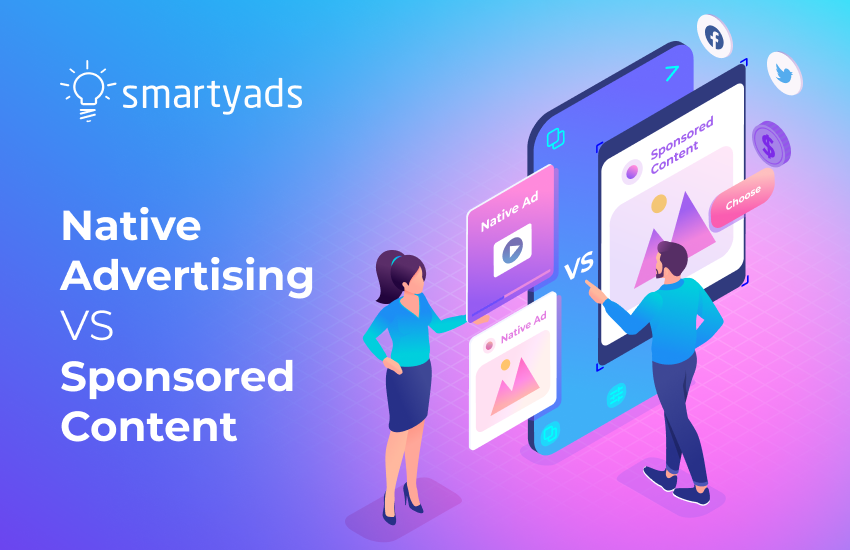

![In-App Advertising: the Complete Guide [Updated 2025]](/storage/uploads/2020/september/in-app-advertising-trends.png)
